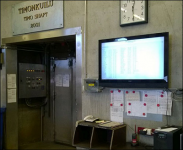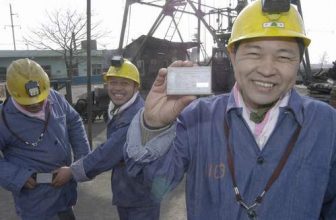
Pyhasalmi mine expands use of RFID system to improve safety
[ad_1]
In the past five years, the Pyhasalmi mine in Finland has been using passive high-frequency RFID tags to record the entry and exit of employees to ensure the safety of personnel evacuation in emergency situations. Kimmo Luukkonen, general manager of the mine, said that the technology provides visibility to mine personnel and thus increases the efficiency and accuracy of the safety project. The company plans to use HF RFID solutions to monitor personnel carrying explosive detonators in mines.
This RFID solution uses Identoi’s Idesco HF and UHF RFID readers.
Pyhasalmi is one of the deepest and oldest mines in Europe. The owner is a Canadian company called First Quantum Minerals. The rich copper and zinc are buried at a depth of 1,400 meters underground. The mine has two drive shafts, one is used to transport miners down and up the mine, and the other is used to transport transport vehicles.

In 2009, the management staff of the mine began to deploy an operation safety system with Identoi, which can automatically identify people in the mine at a given time. This information is very important because, during an emergency evacuation, the company needs to ensure that everyone in the mine arrives at the refuge and finds out who has not reached the refuge. In addition, the mine will extract minerals by blasting certain rocks, and this process also requires evacuation of personnel.
Before deploying the RFID solution, the company manually tracked personnel in the mine. The nameplate of each employee is hung on the wall at the entrance of the mine. When entering the mine, employees need to take away the nameplate. When walking out of the mine, the employee re-hanged the nameplate. In this way, managers only need to look at the actual nameplate on the entrance wall to know the personnel in the mine. However, because employees often forget to remove the nameplate, this system is very error-prone. In addition, because visitors do not have nameplates, the system cannot record their information.
Identoi CEO Sakari Vaara said that the RFID solution uses passive 13.56 MHz RFID tags (in line with ISO15693 standards). The label is small and can be attached to the employee’s key. All employees need to carry this label with them. The mine has 220 employees, usually 70 employees per shift.
When entering the mine, the employee needs to place his blue Idesco Sail Tag on the Idesco Access 7CE reader at the door to read it. After the reader reads the tag ID number, it uploads it to Identoi’s software. Then, the large screen at the entrance will display the employee’s name. If an employee brings visitors in, the employee needs to enter the number of visitors on the touch screen connected to the Idesco reader. In this way, managers can know the number of people in the mine.

When leaving the mine, employees also need to go through the same steps. Employees need to place their tags on the Idesco reader at the exit to read them. This data will also be uploaded to the Identoi software. Managers can view it at any time.
When an emergency occurs, employees need to take refuge in 23 shelters in the mine. Two Idesco HF readers are installed in each shelter, one for entry and one for exit. If employees fail to arrive at the shelter, the mine can use voice communication technology to find them. Vaara said that this system uses HF RFID technology due to the reading distance. If UHF frequency is used, the system may misread employees near the door.
In 2012, the mine installed UHF RFID technology to record trucks, vans and cars in the above-ground work area. When entering the area, the vehicle needs to pass through a gate equipped with an Idesco EPC UHF reader. Every authorized vehicle has EPC UHF installed on the windshield RFIDLabel. In this way, the reader can record the ID number of the vehicle passing through the gate and create an entry and exit record.
This year, the mine also plans to use RFID technology to track detonators. The staff will use special tools to inject the blasting material into the hole, and then insert the detonator. The detonator manufacturer will print the ID number on each product in the form of a QR code. Ditch, when installing detonators, employees use handheld readers to read HF tags and scan the QR code to obtain the ID number and information of the detonator. In the second half of last year, the mine planned to attach HF tags to detonators to simplify the work of employees.
(Exclusive manuscript of rfid world network, please indicate the source author for reprinting!)
[ad_2]




